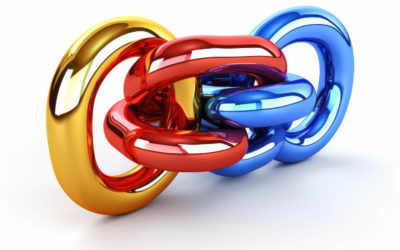Yes, I know that no purposely intends to build an annoying website. However, it does happen. Think of the last time you were on a website and the experience was so frustrating you wanted to toss your device into a dumpster fire.
- 88% of users are less likely to return to a website after a bad user experience. That is a very sobering statistic.
This happens from a variety of reasons, but usually it boils down to either being purposely misleading (the rare case) or simply not thinking through the experience your users will have on your website.
So, what are the symptoms of an annoying website?
- Bad or confusing navigation
- Lots if unnecessary interactions
- Asking for too much information
- Bad design
- Site speed
Bad or confusing navigation
This is basic design, but confusing navigation will annoy visitors and drive them away. Strive to keep your navigation simple and categorized based on the user’s needs. User needs can often be associated to the stage they are at in the buyer’s journey.
Awareness Stage: The customer is exploring to see if they have a problem or not. Navigate the users into helpful resources such as articles, videos, or infographics.
Consideration Stage: The customer is researching how to solve their problem. Provide them with information on how your products or services match up to problems. They need navigation to all you offer.
Decision Stage: The customer is comparing and making a decision. Consider navigating them to free trials, testimonials, etc.
Customer Stage: The customer needs quick navigation access to their account, help, and contact information.
How to fix it:
- User test your navigation. Find a group of people to survey to see if they can find what they need.
- Evaluate navigation of great sites. Have a favorite website? Great – review how their navigation works and apply what you learned to your site.
Lots of unnecessary interactions
Yes, you want to engage with the visitors to your site. However, there is a fine line between being helpful and annoying. Asking users to participate in lots of actions they didn’t ask for is annoying.
For example, I was on a parts website to get a new carb rebuild kit, spark plugs, and a pull throttle cable for my motorcycle. As I visited the site, I received the following interactions before I could even search for a part:
- Cookies accept box (I get it this is necessary and not annoying to me)
- A pop-up I had to dismiss with a sale about something I wasn;t remotely interested in
- Another pop-up asking for me to subscribe to the email list
- And finally, a chat robot that popped up in the bottom right corner that took up a bunch of the screen (on laptop device).
What did I do? I hit back and went to the competitor.
While the need and desire for interaction is there, make sure you are making it unobtrusive. For the example above, a small chat robot icon in the bottom right and a well placed call to action for the sale OR to subscribe probably would have been sufficient. In fact, it might have even encouraged me to engage with the site and give up my email.
For interactions on websites, remember less is typically more. Understanding User Experience is a good place to start.
How to fix it:
- Focus on the internet of the interactions and place them in a better location for the user
- Count your interactions – do you have more than 1 on the main landing page? You might be annoying your visitors.
- If you have resources, engage in UX consulting to help optimize the flow for your visitors, collecting the information you need without being annoying
Asking for too much information
In the technology field, there is such a thing as minimal access policies. That means I should have just enough access to do the things I need to do, nothing more. Think of a bank teller. They have access to their station and cash, but not access to the vault.
The same principle applies to the information you ask users to provide. To complete a purchase, you might need name, address, phone, and payment information. Additional steps or information beyond what you need can annoy visitors and might lead to cart abandonment.
How to fix it:
- Evaluate what you really need. Do you really need them to create an account and provide their job title and place of employment? While it is nice to have, you can work on creating that later.
- Evaluate and update your sales workflows for the minimal amount of information you need.
Bad design
We have all visited websites that have either made us cringe from the design choices or look like they haven’t been refreshed since George Bush was in office. While it may be hard to quantify the value of design, bad or ugly design has a definite annoyance factor for your visitors.
- 94% of the first impressions on a website are based on its visuals and design.
- 88% of website consumers don’t return to a page if they have a terrible experience.
- 57% of consumers say they won’t recommend a poorly designed website.
- 50% of website visitors use web design as a defining factor when it comes to credibility.
How to fix it:
While design and beauty is subjective, it can be helpful to take a good hard look at your design and honestly consider how it looks.
To evaluate your design:
- Get feedback from visitors or trusted colleagues
- Hire a firm to give you feedback. You can probably have a general conversation about the site simply by booking a consultation with a design firm.
To fix your design:
- Set ego aside. You may have design aesthetics you like, but that does not mean that appeals to others. Trust experts that are up on the latest trends in design and overall design best practices.
- Hire a design firm. This may not be as expensive as you think with a small local firm and the results can be outstanding.
- Think – when is the last time you updated the site? If it has been a long time, you probably need a refresh.
Site Speed
Site speed is a big factor in annoying visitors. Visitors to your site will not stick around if your site is sluggish or fails to load in the expected time. What is the expected time you ask? Ideally, 3 seconds or less. Consider these website stats:
- 37% of Visitors Bounce When Your Site Takes Five Seconds to Load. …
- 70% of Customers Say Site Speed Impacts their Purchasing Decisions. …
- A One-Second Delay Results in a 7% Drop in Conversions.
How to fix it:
- Fixing site speed most likely requires developer help. Contact your site administrator or company to engage.
- If you are DIY, research some site speed best practices. Typically, sites need to have optimized images, caching, minification, and compression to be most effective.
- Also if you are DIY with wordpress, there are a variety of plugins that will automatically take care of things like caching and image optimization.
- Images often have a big impact on speed. If you are DIY, optimize your images with Tiny PNG before uploading. It’s free.
And there you have it – 5 tips and tricks to hopefully keep from annoying your website visitors.




